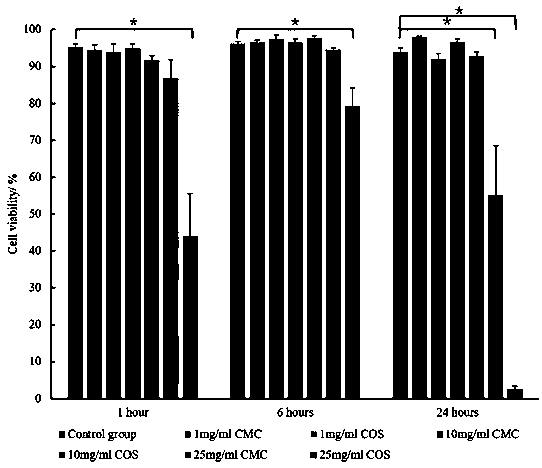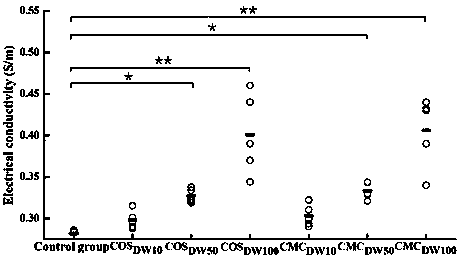Method for inhibiting tumor cells from growing by radiofrequency ablation
A technology for radiofrequency ablation and tumor application in the field of expanding the range of tumor ablation to achieve the effect of improving physical properties
- Summary
- Abstract
- Description
- Claims
- Application Information
AI Technical Summary
Problems solved by technology
Method used
Image
Examples
Embodiment 1
[0025] Embodiment one: see figure 1 with figure 2
[0026] HepG2 liver cancer cells were cultured in cell culture medium (Dulbecco modified Eagle medium, DMEM) containing 10% fetal bovine serum and 1% penicillin / streptomycin (PS), and the incubator environment was CO 2 Concentration 5% and temperature 37°C. Before use, cells were passed through 0.25% trypsin-EDTA solution for harvesting, and passed the cell counter ( BioTech, Shanghai Ruiyu Biotech.Co., Ltd., Shanghai, China) ensure that the cell concentration in the cell suspension is 2×106cells / ml (overall viability >97%). In addition, COS and CMC powders are added to DMEM respectively to form DMEM solutions containing different concentrations of COS and CMC, called COS DMEM1,10,25 and CMC DMEM1,10,25 (Number subscripts are the concentrations used, ie 1, 10 and 25 mg / mL). Additionally, all solutions were sterilized by passing through 0.22 μm filters and UV light. HepG2 cells were transplanted into 12-well plates a...
Embodiment 2
[0029] Embodiment two: see image 3 .
[0030] In addition to the inhibitory effect of COS and CMC on tumor cells, COS and CMC can also improve the physical properties of biological tissues, that is, electrical conductivity, to promote the outward diffusion of radiofrequency current and expand the therapeutic range of radiofrequency ablation. In this experiment, the liver model was used to measure the conductivity. The initial conductivity measurement experiment of the liver model without solution was used as the control group, and the experimental group was injected with COS DW or CMC DW Measurement of the posterior liver conductivity. COS DW or CMC DW Fully inject into the model through the syringe to ensure COS within the measurement range DW or CMC DW Consistent concentration, the whole experiment used three concentrations of COS: 10, 50, 100mg / mL DW and CMC DW The measurement experiment was carried out, and the conductivity measurement device was a four-probe meas...
Embodiment 3
[0032] Embodiment three: see Figure 4 , Figure 5 with Image 6
[0033] In the experiment, a commercial bipolar gold-plated electrode needle (Genetrode, 508, Harvard Apparatus, Holliston, MA, USA) was used to perform radiofrequency ablation on the liver model. Place the two electrode needles at a distance of 5mm and insert them into the model in parallel with a depth of 5mm. Then inject 2mL (total 4mL) of cationic polymer solution at the axial midpoint of the two electrodes of the bipolar electrode needle. In this experiment, they were randomly divided into three groups according to the injected solution, namely, the control group (no solution injection), COS DW100 Group and CMC DW100 groups, and each group performed 4 experiments. After solution injection, an alternating current of 0.06 A was input into the liver model through bipolar electrode needles. When the current input of the tissue is blocked due to high-temperature carbonization, that is, roll-off, the entir...
PUM
 Login to View More
Login to View More Abstract
Description
Claims
Application Information
 Login to View More
Login to View More - R&D
- Intellectual Property
- Life Sciences
- Materials
- Tech Scout
- Unparalleled Data Quality
- Higher Quality Content
- 60% Fewer Hallucinations
Browse by: Latest US Patents, China's latest patents, Technical Efficacy Thesaurus, Application Domain, Technology Topic, Popular Technical Reports.
© 2025 PatSnap. All rights reserved.Legal|Privacy policy|Modern Slavery Act Transparency Statement|Sitemap|About US| Contact US: help@patsnap.com



